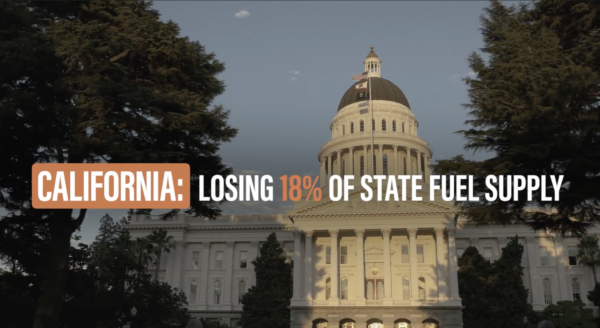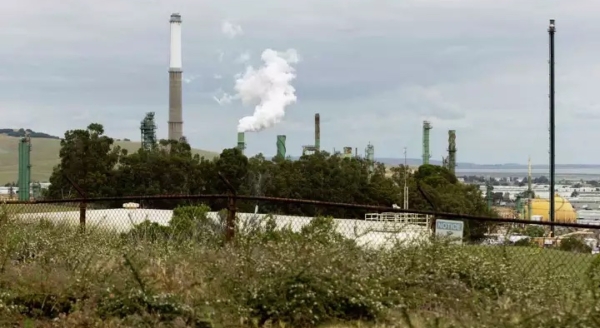A new report from the Sierra Club vastly overstates the challenges posed by idle wells, making faulty claims that ignore key facts about California’s idle well management programs.
Here are five of the most egregious ways the Sierra Club report gets it wrong on idle wells in California:
1) THE REPORT IGNORES BASIC FACTS ABOUT IDLE WELL ACCOUNTING TO FALSELY CLAIM THAT THE STATE’S PROGRAMS ARE FAILING.
The report points to an apparent increase in idle wells to argue that the state’s programs are ineffective and delay well decommissioning efforts.
“The 7,803 well increase reported between calendar years 2018 and 2019 may be attributed to better accounting through the use of WellSTAR. With the introduction of WellSTAR as CalGEM’s system of record, wells that became idle after 24 consecutive months of no reported production or injection were easier to identify.”
Adjusting for the improved accounting, the actual number of idle wells in California has declined in recent years.
2) THE REPORT IGNORES LONGSTANDING CALIFORNIA LAW TO FALSELY CLAIM THAT TAXPAYERS WILL BE FINANCIALLY LIABLE FOR IDLE WELL MANAGEMENT.
The report makes an unsupported assertion that California’s large oil and gas producers will avoid plugging and decommissioning obligations by “down selling” wells to smaller, poorly capitalized producers that don’t have the financial resources to plug them.
First, there is no evidence that such “down selling” has ever or would ever occur in California. A review of producing wells by Catalyst Environmental Solutions in 2020 found that large companies retain wells through their useful lives, even when the wells become low-producing.
But second, even if wells are sold, California law has for decades stated that the seller would remain jointly liable for plugging. SB 2007 (Costa 1996) requires that if a well is deserted and the operator cannot pay for the costs of plugging and decommissioning, CalGEM can pursue operators that owned the well as far back as January 1, 1996, for plugging and abandonment costs. Furthermore, AB 1057 (Limón 2019) provided CalGEM with additional authority to track and trace the ownership of wells to better ensure that previous owners can be held liable for plugging costs.
3) THE REPORT MISREPRESENTS STUDY FINDINGS TO FALSELY CLAIM THAT IDLE WELLS CAUSE ENVIRONMENTAL DAMAGE.
On page 10, the report states that 29% of groundwater samples near the Montebello Oil Field contained petroleum hydrocarbons from nearby oil wells.
“The RMP sample results and available historical data in and near the Montebello Oil Field did not provide conclusive evidence that oil and gas development has adversely affected groundwater resources. All samples with detectable petroleum hydrocarbons, thermogenic gases, or both, were collected from sites that also are within 500 meters of anthropogenic hydrocarbon sources not associated with oil and gas development or sources.”
The USGS study noted that naturally occurring hydrocarbons could have been responsible for the results.
4) THE REPORT IGNORES HOW CALIFORNIA INSTITUTED COMPREHENSIVE IDLE WELL TESTING REGULATIONS IN 2019.
In its unsupported discussion of the environmental impacts of idle wells, the report makes no mention of California’s landmark idle well testing regulations that become effective on April 1, 2019. These comprehensive regulations require oil producers to conduct regular tests on its full portfolio of idle wells, and any leakages or other problems found are required to be remediated immediately.
5) THE REPORT USES FLAWED ASSUMPTIONS TO FALSELY CLAIM CALIFORNIA WILL SOON SEE A LARGE AND COSTLY INFLUX OF IDLE WELLS.
The report points to California’s large number of low-producing wells as proof that the state’s oil and gas industry is in its “decommissioning phase.” This is inaccurate. Oil fields in California are very cost-efficient, with wells spaced tightly together, allowing them to share common power sources and other infrastructure. This allows California producers to operate low-production wells at a profit for prolonged time periods.
A 2020 study by Catalyst Environmental Solutions found that of the 12,528 low-producing wells in 1997, 68% (8,512 wells) were still active 20 years later. Furthermore, of those that remained active, 27% (2,273 wells) were actually producing at a greater rate in 2017 than they were in 1997, due to reworks or other well enhancements.
***
In summary, the Sierra Club has put forward a report on idle wells in California that misrepresents data, twists the findings of third-party studies, and demonstrates a stunning lack of knowledge about current law and relevant state programs.
The Sierra Club report is a clearly unreliable source that policymakers should reject.


